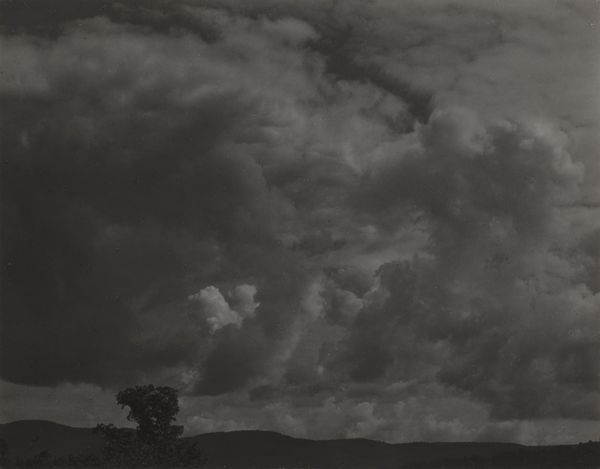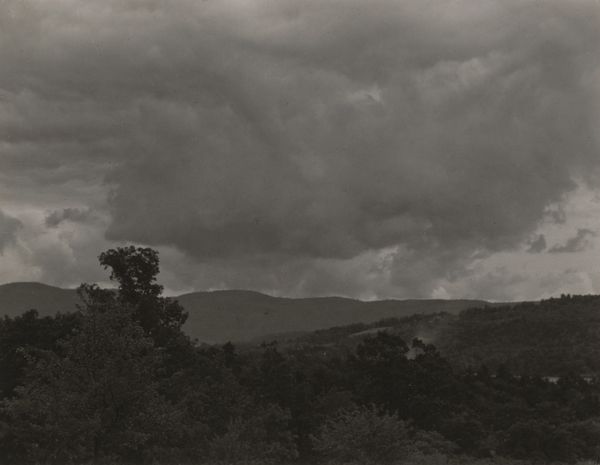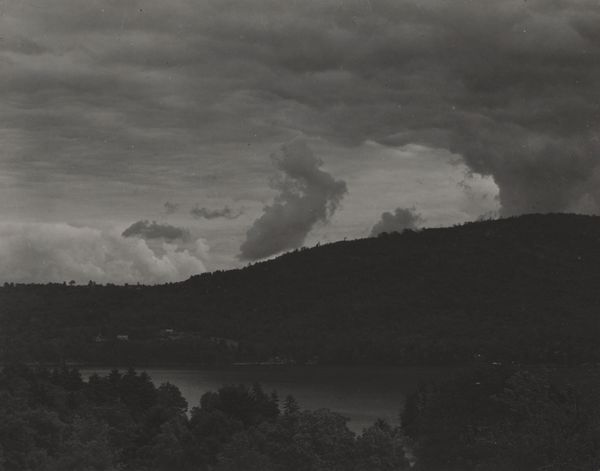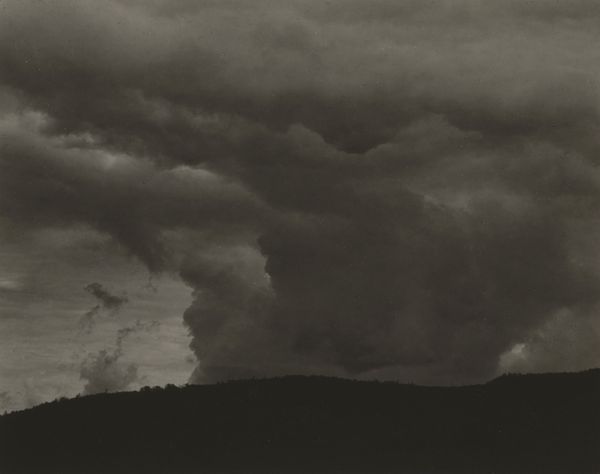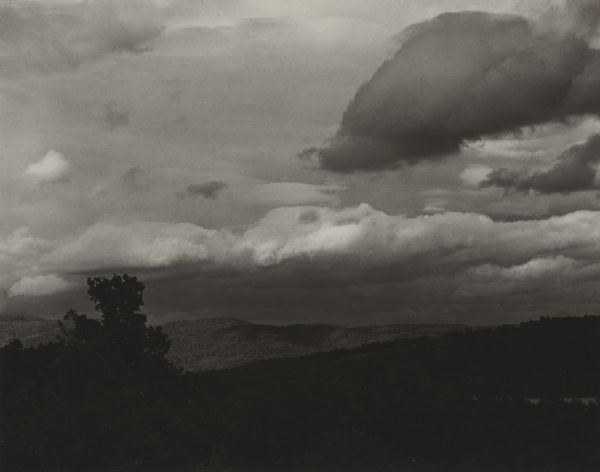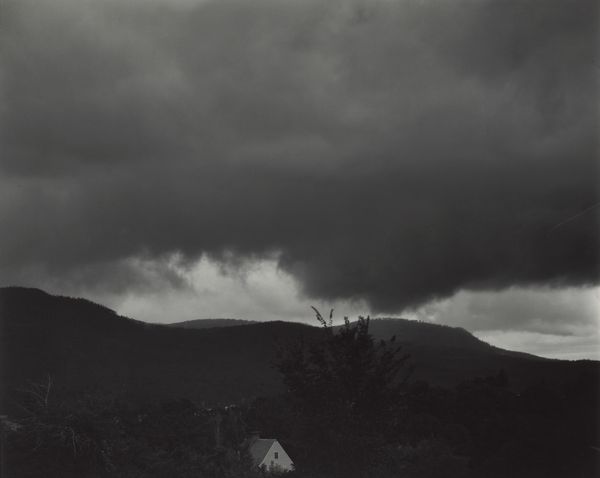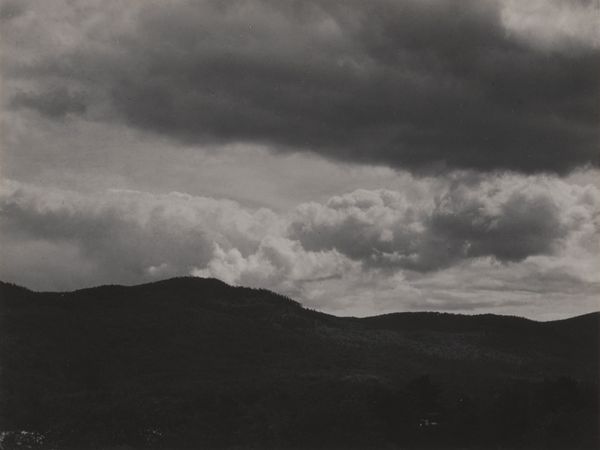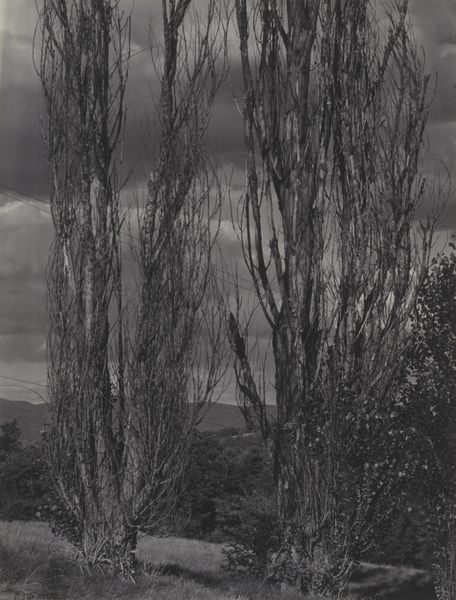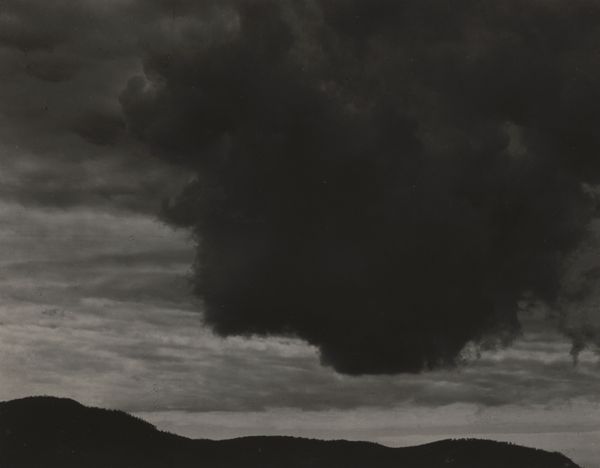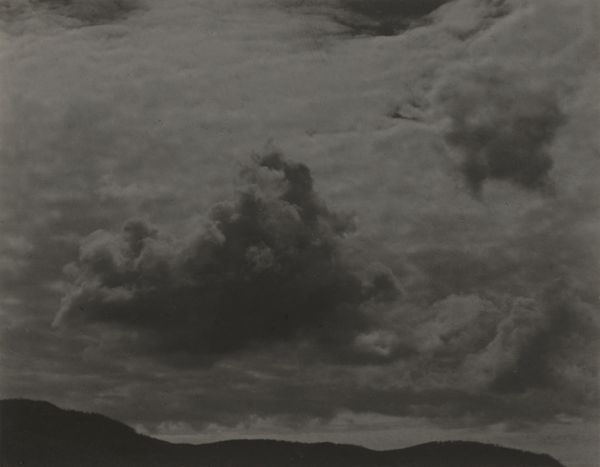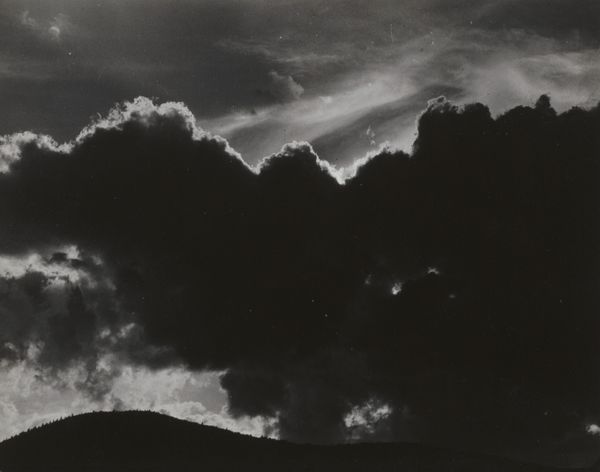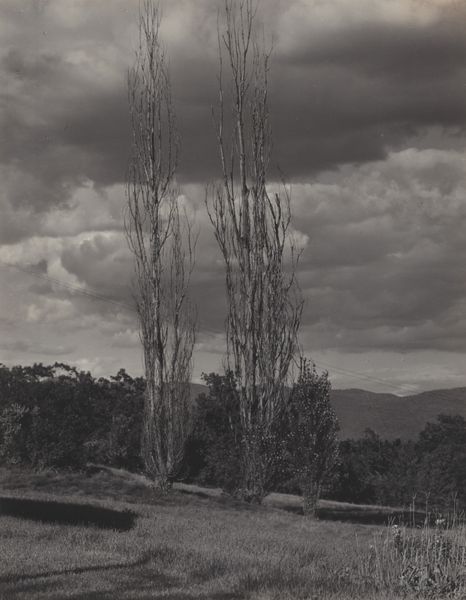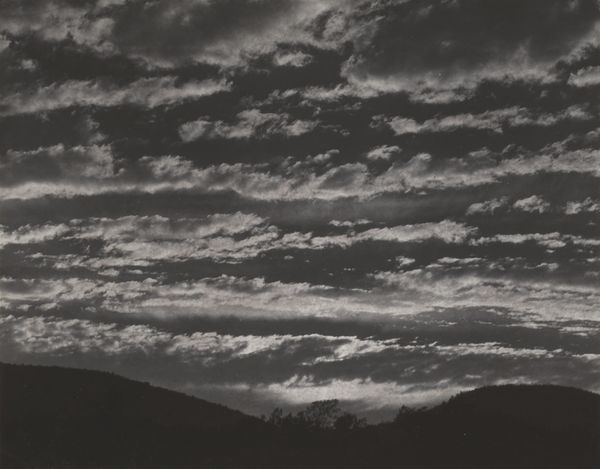
Dimensions: sheet (trimmed to image): 9.2 × 11.5 cm (3 5/8 × 4 1/2 in.) mount: 34.3 × 27.6 cm (13 1/2 × 10 7/8 in.)
Copyright: National Gallery of Art: CC0 1.0
Curator: Here we have Alfred Stieglitz’s gelatin-silver print, "Lake George," circa 1926. My initial feeling is that it is overwhelmingly…gloomy. The oppressive cloud cover really sets a tone. Editor: Indeed. The composition is masterfully structured, though. The weighty cloud mass dominates the upper two-thirds, offset by the lower register of rolling hills and foliage. See how Stieglitz subtly balances the tonal range, allowing the textures of the clouds and trees to sing? Curator: But what are the social and cultural contexts here? This was taken during a time of great transformation. What does this ominous sky signify within the narrative of modernity’s discontents? Editor: Perhaps we could approach it simply. Stieglitz, ever the Modernist, aimed to elevate photography to fine art by emphasizing form and composition, mirroring avant-garde painting practices of the time. Curator: But can we really ignore the symbolism? That lake represents fluidity, change. And with those heavy clouds, isn’t Stieglitz mirroring the weight of industrial change bearing down on the individual psyche? There's also the problematic romanticizing of the landscape, erasing indigenous presence for an aesthetics detached from socio-historical narratives. Editor: An interesting interpretation. But what I see are the stark contrasts within the gelatin-silver print and the carefully articulated gradations that really stand on their own. It seems like such a personal interpretation of weather conditions at Lake George, almost like he captured its very own soul on that particular day. The fog also suggests more is hidden than revealed. Curator: Still, ignoring the possible sociopolitical echoes seems…incomplete. It does seem like a retreat to nature amid rapid industrialization. Editor: And within that nature, there are purely visual rhythms worth celebrating. This invites you into close viewing, the interplay of dark and light creating a dynamic, purely visual experience. It encourages appreciation of what could have felt like isolation and alienation during that specific historical moment. Curator: I see your point about formalism driving it home, but it is essential to remember the greater realities. The clouds, though they seem oppressive and dark, may symbolize a call to activism in times of distress. Editor: Thank you. Viewing that landscape was worth it for that final bit of hope.
Comments
No comments
Be the first to comment and join the conversation on the ultimate creative platform.
